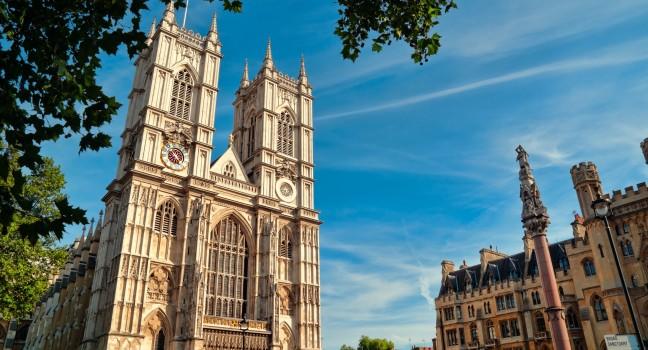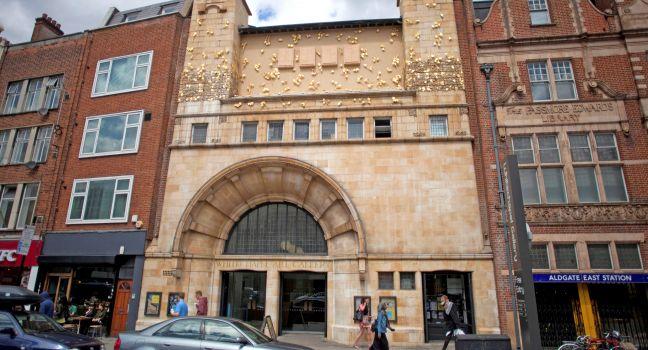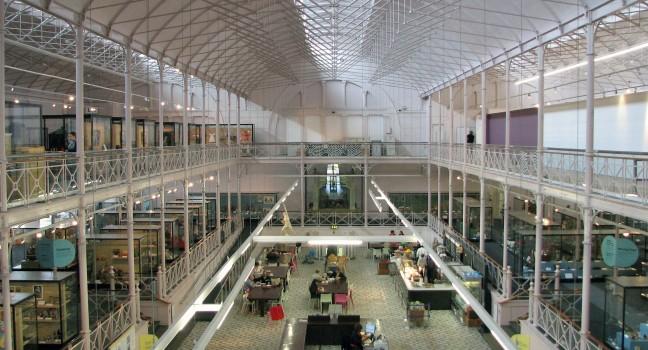From William the Conqueror to Queen Victoria, the kings and queens of England added towers and wings to this brooding, imposing castle that is visible for miles. It's the largest inhabited castle in the world and the only royal residence in continuous use by the British royal family since the Middle Ages. Despite the multiplicity of hands involved in its design, the palace manages to have a unity of style and character. The most impressive view of Windsor Castle is from the A332 road, coming into town from the south. Admission includes an audio guide and, if you wish, a guided tour of the castle precincts. Entrance lines can be long in season, and you're likely to spend at least half a day here, so come early.
As you enter, Henry VIII's gateway leads uphill into the wide castle precincts, where you're free to wander. Across from the entrance is the exquisite St. George's Chapel (closed Sunday). Here lie 10 of the kings of England, including Henry VI, Charles I, and Henry VIII (Jane Seymour is the only one of his six wives buried here) along with one very famous queen; the chapel is the last resting place of Queen Elizabeth II and her husband Prince Phillip. One of the noblest buildings in England, the chapel was built in the Perpendicular style popular in the 15th and 16th centuries, with elegant stained-glass windows; a high, vaulted ceiling; and intricately carved choir stalls. The colorful heraldic banners of the Knights of the Garter—the oldest British Order of Chivalry, founded by Edward III in 1348—hang in the choir. The ceremony in which the knights are installed as members of the order has been held here with much pageantry for more than five centuries. The elaborate Albert Memorial Chapel was created by Queen Victoria in memory of her husband.
The North Terrace provides especially good views across the Thames to Eton College, perhaps the most famous of Britain's exclusive public schools (confusingly, "public schools" in Britain are highly traditional, top-tier private schools). From the terrace, you enter the State Apartments, which are open to the public most days. On display to the left of the entrance to the State Apartments, Queen Mary's Dolls' House is a perfect miniature Georgian palace-within-a-palace, created in 1923. Electric lights glow, the doors all have tiny keys, and a miniature library holds Lilliputian-size books written especially for the young queen by famous authors of the 1920s. Five cars, including a Daimler and Rolls-Royce, stand at the ready. In the adjacent corridor are exquisite French couturier–designed costumes made for the two Jumeau dolls presented to the Princesses Elizabeth and Margaret by France in 1938.
Although a fire in 1992 gutted some of the State Apartments, hardly any works of art were lost. Phenomenal repair work brought to new life the Grand Reception Room, the Green and Crimson Drawing Rooms, and the State and Octagonal Dining Rooms. A green oak hammer-beam (a short horizontal beam that projects from the tops of walls for support) roof looms magnificently over the 600-year-old St. George's Hall, where the late Queen Elizabeth frequently hosted state banquets. The State Apartments contain priceless furniture, including a magnificent Louis XVI bed and Gobelin tapestries; carvings by Grinling Gibbons; and paintings by Canaletto, Rubens, van Dyck, Holbein, Dürer, and Bruegel. The tour's high points are the Throne Room and the Waterloo Chamber, where Sir Thomas Lawrence's portraits of Napoléon's victorious foes line the walls. You can also see arms and armor—look for Henry VIII's ample suit. A visit October to March also includes the Semi-State rooms, the private apartments of George IV, resplendent with gilded ceilings.
To see the castle come magnificently alive, check out the Changing the Guard ceremony, which takes place daily at 11 am April to July and on alternate days at the same time August to March. Confirm the exact schedule before traveling to Windsor. Note that the State rooms (and sometimes the entire castle) are closed during official state occasions; dates of these closures are listed on the website, or you can call ahead to check.







